Itinerario turistico
Parchi della Val di Cornia
I Parchi della Val di Cornia raccontano una storia millenaria che parte dall’antico popolo degli Etruschi e testimonia secoli di attività di estrazione e lavorazione dei metalli, proponendo anche splendidi ambienti naturali, costieri e collinari. Il sistema include 2 Parchi Archeologici, 4 Parchi Naturali, 3 Musei, 1 Centro di Documentazione, compresi nell’area di cinque Comuni all’estremo sud della provincia di Livorno, di fronte all’isola d’Elba.
The Val di Cornia’s Parks tell a thousand-year-old story which begins with the Etruscan people and bears witness to centuries of extraction and working on metals, proposing also splendid natural, coastal and hilly environments. The system includes 2 Archaeological Parks, Natural Parks, 3 Museums, 1 Documentation Centre, included in the area of the five municipalities at the extreme south of the province of Livorno, opposite the Island of Elba.
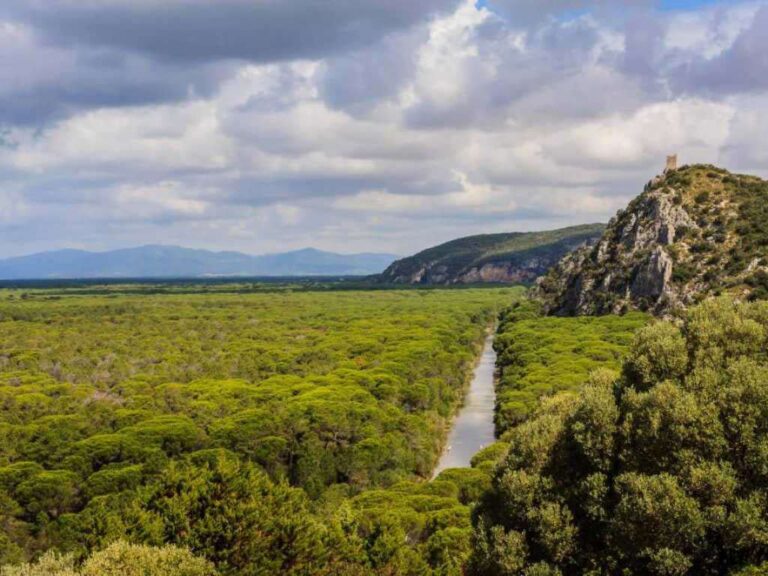
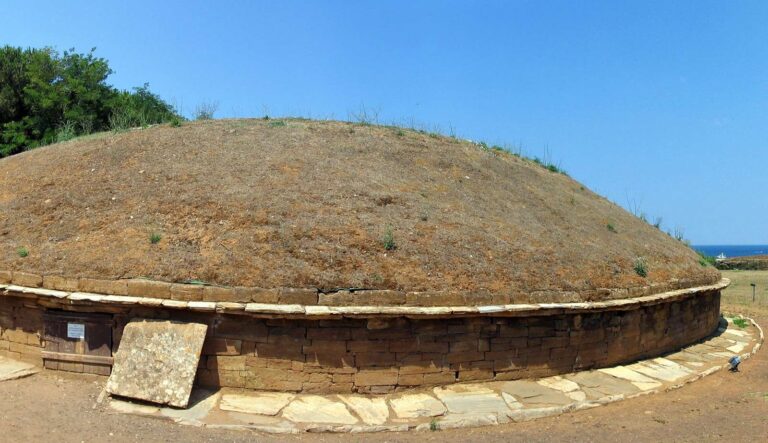
BARATTI E POPULONIA
Si estende tra le pendici del promontorio di Piombino ed il Golfo di Baratti , dove sorgeva la città etrusca e romana di Populonia, nota fin dall’antichità per l’intensa attività metallurgica legata alla produzione del ferro. Comprende una parte significativa dell’abitato etrusco e romano di Populonia, con le sue vaste necropoli, le cave di calcarenite ed i quartieri industriali in cui si lavorava il minerale di ematite, proveniente dai giacimenti dell’isola d’Elba, per ricavare lingotti di ferro. Il parco è articolato in diverse aree di visita che permettono di cogliere la trasformazione del paesaggio nel corso dei secoli.
Stretching over 80 hectares between the slopes of the promontory of Piombino and the Gulf of Baratti, it is presented as a real open-air museum, glittering with ferrous slag which show the impressiveness of the industrial Etruscan village. The Park includes a significant part of the ancient town of Populonia, a unique Etruscan settlement built directly on the sea, with its necropolises, the calcarenite quarries and the industrial working quarters for iron coming from the hematite deposits on the Island of Elba. The park is spread over various areas of visit which enable the visitor to appreciate the transformation of the scenery over the centuries.
MUSEO ARCHEOLOGICO DEL TERRITORIO DI POPULONIA
Culturalmente e funzionalmente connesso al Parco archeologico di Baratti e Populonia, il museo rappresenta il principale polo espositivo del Sistema dei Parchi.
The Archaeological Museum of the Territory of Populonia
The Museum is an integral part of the Archaeological Park of Baratti and Populonia project, and is the main show-case for the network of Parks of the Val di Cornia.
Parco Archeominerario di San Silvestro
Situato alle spalle di Campiglia Marittima e del promontorio di Piombino, il parco si estende su un’area di circa 450 ettari. I percorsi di visita si snodano tra musei, gallerie minerarie, un borgo medioevale di minatori e fonditori fondato circa mille anni fa, e sentieri di interesse storico, archeologico, geologico e naturalistico.
The Archaelogical Mines Park of San Silvestro
Situated behind Campiglia Marittima and the promontory of Piombino, it covers 450 hectares. The routes for visiting encompass museums, mining tunnels, a Medieval village of miners and foundrymen founded around one thousand years ago (Rocca San Silvestro) and paths of historical, archaeological, geological and naturalistic interest.
Parco Costiero della Sterpaia
Una preziosa e rara foresta umida, tipica dell’antico paesaggio litoraneo della Maremma, sottratta dal Comune di Piombino alla lottizzazione abusiva. Un ambiente incantato dove perdersi tra querce secolari, in compagnia dei piccoli animali che lo abitano, fino a scoprire, al di là delle dune sabbiose, il mare. Il Parco si estende lungo il litorale costiero tirrenico livornese, nell’ampio Golfo tra Piombino e Follonica.
The Coastal Park of Sterpaia
Here we have a rare and highly-prized humid forest, which was typical of the landscape of the ancient coast of the Maremma. Miraculously surviving deforestation, it was reclaimed by the municipal authority after the unauthorised lotting of the 1970s. The Park stretches along the Livornese Tyrrhenian coast, in the wide gulf between Piombino and Follonica.
PARCO COSTIERO DI RIMIGLIANO
Una striscia verde, affacciata sul mare, dove la vegetazione mediterranea si mostra in un’eccezionale varietà di specie, forme e colori. Dalla sabbia alle dune, dove la macchia è modellata da venti marini, all’ombrosa foresta dominata da lecci e pini domestici, con la loro caratteristica chioma ad ombrello.
THE COASTAL PARK OF RIMIGLIANO
A strip of luxuriant green landscape, overlooking the sea, where the Mediterranean vegetation is particularly varied in constituent species, form and color. The park extends over beaches and dunes where the bush has been shaped by sea breezes, and on to the shady forest dominated by holm oak and by maritime pine with their characteristic parasol-shaped tops.
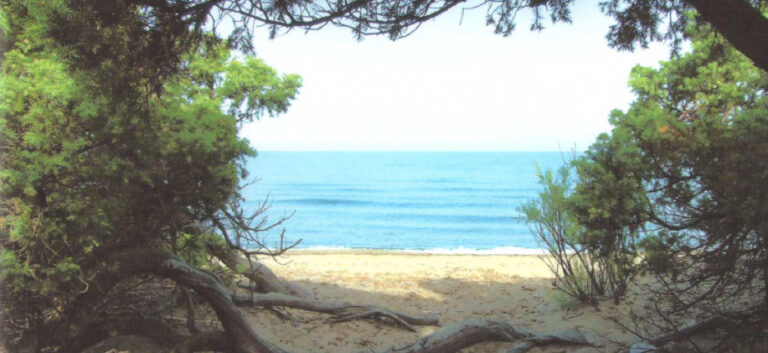
Parco Naturale di Montioni
Si estende per circa 7000 ettari tra la Valle del Cornia e del Pecora, nel sistema collinare tra Massa Marittima e Suvereto. Queste colline, di media altitudine, sono coperte da boschi soprattutto di leccio, e costituiscono un paesaggio vegetale strettamente legato all’azione dell’uomo, in particolare alla produzione del carbone e al taglio del bosco.
the Natural Park of Montioni
Covering 7000 hectares between the Valley of Cornia and Pecora, in the range of hills between Massa Marittima and Superato. These hills, of a medium height, are covered by woods, especially Holm-Oak, and represent a landscape of vegetation closely tied to the work of man, in particular to the production of coal and timber.
Parco Forestale di Poggio Neri
Il Parco di Poggio Neri è costituito da un’estesa foresta collinare (settecento ettari) , dominata da lecci e castagni, che offre molteplici opportunità di svago per chi predilige le attività all’aria aperta quali il trekking, il turismo equestre, la raccolta di funghi e castagne, la caccia, il cicloturismo.
The Forestry Park of Poggio Neri
The Poggio Neri park consists of an extensive hill forest dominated by holm oak and chestnut, and offers many opportunities for open air leisure activities like trekking, excursions on horseback, mushroom picking, chestnut gathering, hunting and bicycle excursions.
VILLA LANZI
Villa Lanzi è un edificio cinquecentesco (1556) voluto da Cosimo I De’ Medici, per ospitare minatori di origine germanica, chiamati in Italia a lavorare nelle miniere del Campigliese.
VILLA LANZI
Villa Lanzi is a 16th Century building (1556), commissioned by Cosimo I De’ Medici, to house the miners of Germanic origin, called to Italy to work in the mines of the Campigliese.
La Rocca di Campiglia
Il complesso monumentale della Rocca di Campiglia, è stato inaugurato il 7 giugno 2008 dopo un accurato e rispettoso restauro.
Campiglia Fortress
The monumental complex of the “Rocca di Campiglia” (Campiglia fortress) was inaugurated on the 7th of June 2008 after careful and faithful restoration.
Il Museo del Castello e della città di Piombino
Il restauro dell’antica Fortezza ha riportato al suo originario splendore una delle architetture più antiche di Piombino.
Museum of the Castle and of Medieval Pottery
The restoration of the ancient Fortress has returned one of Piombino’s oldest buildings to its original splendour.
La natura è l’essenza stessa di Livorno e la sua terra. Infatti tra boschi, pinete e una campagna ricca di colori e profumi che degrada sul mare cristallino, pini, tigli e tamerici che profumano l’aria e si confondono con l’odore del salmastro, ulivi, lecci, sugheri, selve di castagni, la macchia mediterranea e i caratteristici tomboli, più del 20% del territorio della provincia di Livorno è organizzato in parchi, aree protette, oasi naturalistiche e rifugi faunistici. Tra tutti è giusto ricordare l’Oasi WWF di Bolgheri, zona umida di importanza internazionale, il Parco della Magona che ospita un’oasi biogenetica, e il Parco delle Colline livornesi, di notevole interesse storico-naturalistico.
Nature is the very essence of Livorno and its land. Woods, pine forests and a countryside rich in colors and perfumes that degrades in the crystal clear sea. Pine trees, lime trees and tamarisk trees that perfume the air and mingle with the smell of salt. Olive trees, oaks, cork oaks, chestnut trees. The Mediterranean and the characteristic “tomboli”. More than 20% of the Livorno’s area is organized in parks, protected areas, nature reserves and wildlife refuges. It is right to remember the WWF Oasis of Bolgheri, a wetland of international importance, the Magona Park, with its biogenetic oasis, and the Park Hills of Livorno with great historical and natural interest.
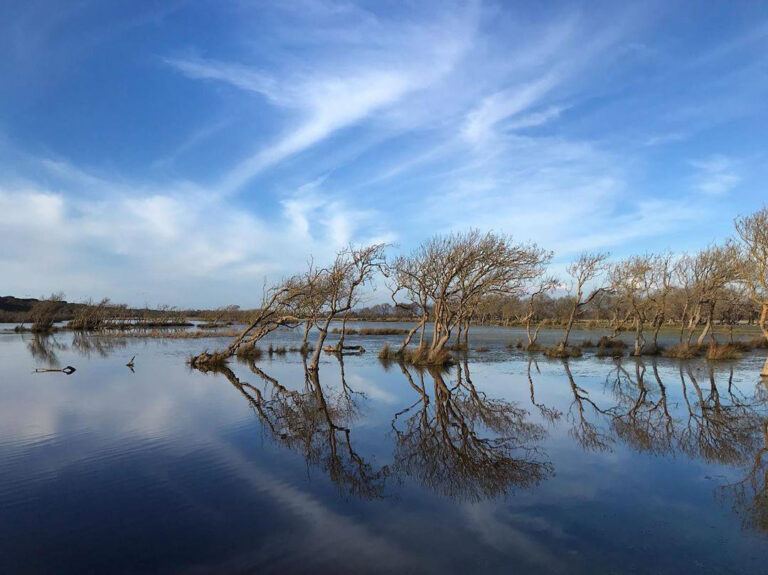
RIFUGIO FAUNISTICO DI BOLGHERI
Vero gioiello naturalistico e primo rifugio faunistico del WWF istituito in Italia, questa zona umida di importanza internazionale è popolata, da novembre a maggio, da migliaia di uccelli acquatici. Vi nidificano, tra gli altri, il tuffetto, l’airone rosso, il germano reale e la folaga, ed è tappa per uccelli migratori come gli aironi bianchi, i beccaccini e le cicogne nere. Il padule di Bolgheri, la cui bellezza si può apprezzare, in modo particolare, sostando nei capanni di osservazione e percorrendo i camminamenti costruiti sulle acque, è situato tra la fitta pineta ed un’ampia spiaggia, in un ambiente ricco di dune e di tomboli. In questo suggestivo ed integro spaccato di antica Maremma trovano rifugio i caprioli, gli scoiattoli, le martore e, tra gli uccelli, le anatre ed i colombacci. La vegetazione, folta di ginepri, pini, frassini e giunchi, si riflette nelle acque scintillanti della palude.
FAUNISTIC REFUGE OF BOLGHERI
True natural jewel and the first WWF wildlife refuge set up in Italy, this wetland of international importance is populated, from November to May, by thousands of water birds. Nest for little grebe, purple heron, the mallard and the coot. Stop for migratory birds like egrets, snipe and black stork. The marshes of Bolgheri, whose beauty can be appreciated, in particular, stopping in the observation huts and along the walkways built on the water, is located among the dense pine forest and a wide beach, in a full of dunes and “tomboli” environment. Deer, squirrels, martens, ducks and pigeons. The vegetation, with juniper, pines, ash and bulrushes, is reflected in the sparkling waters of the marsh.
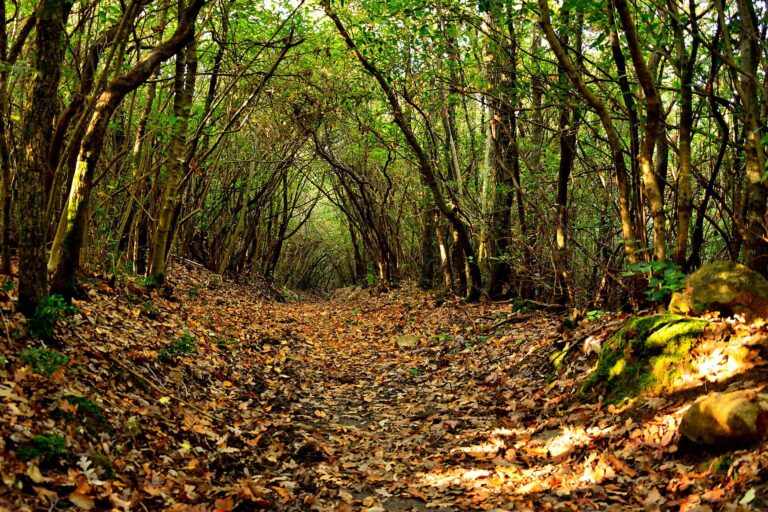
LA MACCHIA DELLA MAGONA
Un mare di verde che si estende per oltre 1600 ettari: questa area naturale protetta, un tempo riserva di legname, visitabile tutto l’anno, rappresenta la meta ideale per il turismo naturalistico e sportivo. Sedici itinerari si sviluppano in 50 km, per escursioni a piedi, a cavallo ed in mountain bike, in un ambiente tipicamente toscano che ospita una folta e ricca vegetazione. Nel bosco, lungo la pianura, le colline o intorno ai fossi, si trovano boschi di latifoglie e di pini, ginestre. lecci e corbezzoli, aceri, olmi e molte specie arbustive che caratterizzano la macchia mediterranea, come il lentisco, il viburno e le eriche, La Macchia della Magona rappresenta un ottimo habitat per numerose specie animali: qui vivono, infatti, tra gli altri, cinghiali, caprioli, daini, mufloni, lepri, volpi, istrici, tassi, scottaioli, martore. Vi fanno sosta molti uccelli migratori come la beccaccia, il colombaccio e la poiana.
A “sea” of green that extends for over 1600 hectares. This protected natural area, old timber reserve, is the ideal destination for nature and sports tourism. Sixteen itineraries are developed in 50 km, for hiking, horseback or mountain bike, in an authentic Tuscan atmosphere that houses a thick and rich vegetation. In the woods, along the plains, hills or around ditches, pine, juniper, holm oaks and strawberry trees, maples, elms and many shrub species that characterize the Mediterranean scrub, such as mastic, viburnum and heather. “Macchia della Magona” is an excellent habitat for many species of animals: boars, roe deer, fallow deer, mouflon, hares, foxes, porcupines, squirrels, badgers, martens. And many migratory birds such as the woodcock, wood pigeon and buzzards.
PARCO DEI MONTI LIVORNESI
Ricco di vegetazione, di acqua e di risorse geologiche, il territorio di Rosignano costituisce una parte importante del Parco dei Monti Livornesi, l’ultima propaggine, quella che giunge fino al mare. Le colline, formatesi tra 15 e 20 milioni di anni fa, rappresentano un patrimonio naturalistico, storico ed ambientale di eccezionale valore, da scoprire grazie a suggestivi itinerari immersi nel verde della macchia mediterranea. Monte Pelato, il Parco dei Poggetti, il Torrente Chioma ricco di fauna, la parte costiera compresa tra Castiglioncello e Rosignano Solvay, sono solo alcuni dei percorsi presenti in questa isola verde, dove è possibile compiere splendide escursioni.
Rich in vegetation, water and geological resources, the territory of Rosignano is an important part of the Livorno’s Mountains Park, the latest offshoot, one that reaches down to the sea. The hills were formed between 15 and 20 million years ago, they represent a natural, historical and environmental exceptional value, to discover through picturesque routes in the green of the Mediterranean. Mount “Pelato”, the Poggetti’s Park, the River Chioma, rich in wildlife, the coastal part between Castiglioncello and Rosignano Solvay, are some of the routes in this green area, where you can make beautiful hikes.

